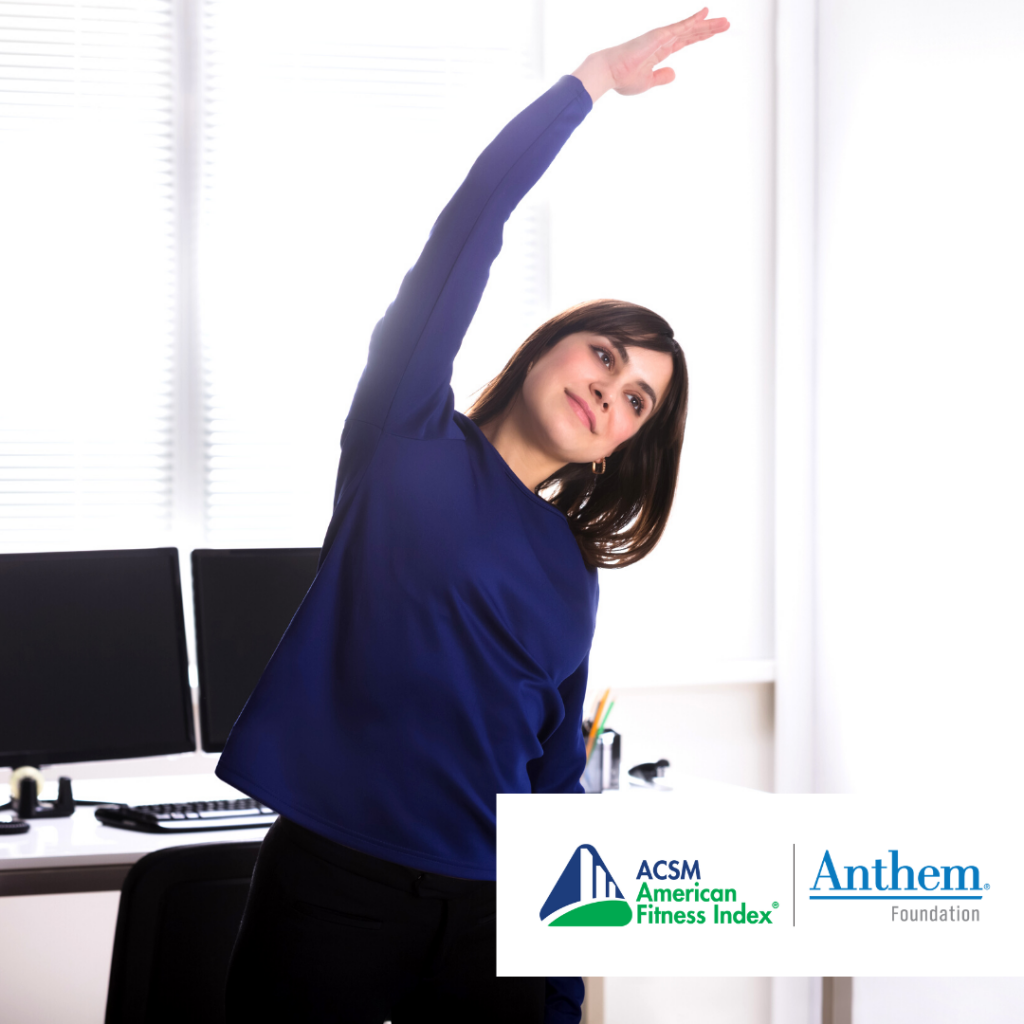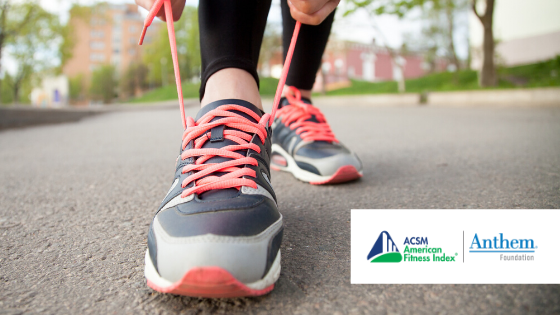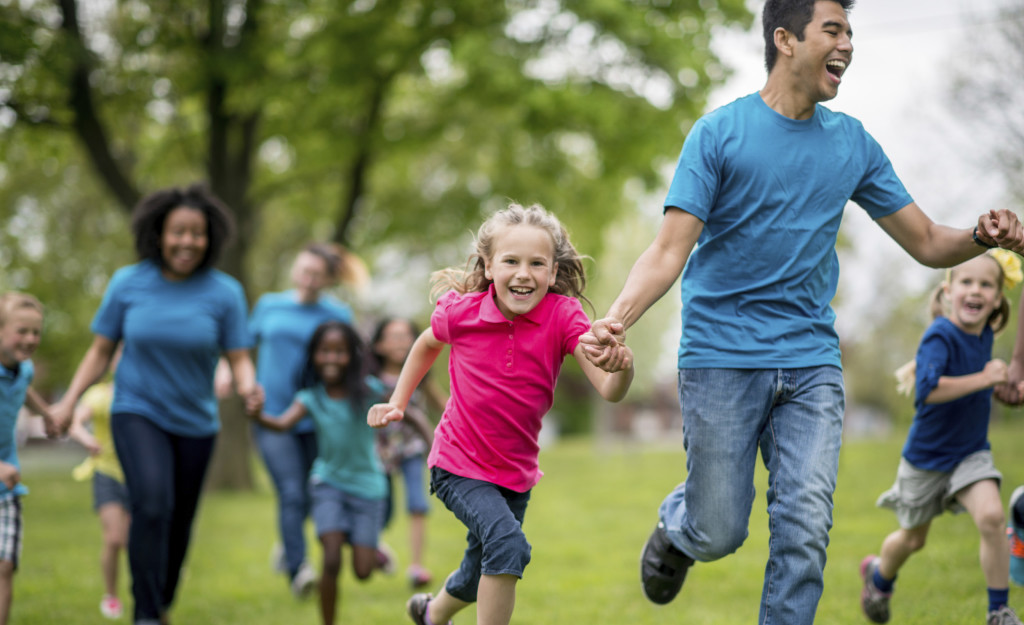The coronavirus pandemic has had a large impact on our daily life activities including our work, how we move from point A to point B, the time we spend in our homes and what we do recreationally. Physical activity is classified into four major domains: occupation, transportation, household and leisure-time; and all of these domains have also been directly impacted by COVID-19. Considering that exercise improves our mood and sleep, optimizes our immune system and can reduce stress and anxiety, it is now more important than ever to adhere to a physically active lifestyle. The most recent public health guidelines to control the spread of COVID-19 do not interfere with our ability to meet the ACSM-CDC physical activity guidelines.
To reduce the spread (or “flatten the curve”) of COVID-19 the federal government recommends the following:
- Wear a mask that covers your nose and mouth
- Stay six feet apart from others who don’t live with you
- Avoid crowds
- Avoid poorly ventilated indoor spaces
- Wash your hands often with soap and water; use hand sanitizer if soap and water aren’t available
The Physical Activity Guidelines for Americans provide a variety of recommendations for people of different ages and conditions. Briefly, children aged three to five years need physical activity throughout the day, every day, for growth and development. Children and adolescents aged six to 17 years need at least 60 minutes of moderate-to-vigorous intensity physical activity daily. Adults need 150 minutes a week of moderate-to-vigorous-intensity activity. Lastly, regardless of your age, some physical activity is better than none.
Is it possible to maintain a physically active lifestyle during the pandemic?
How can I incorporate enough physical activity to remain in optimal physical and mental health? How can I stay active if I am asked to work from home or remain socially distanced from others? These are very good questions, and the answers show that the sets of recommendations for physical activity and flattening the curve are not mutually exclusive. We can act consciously to reduce the spread of the virus that causes COVID-19, and we can maintain physical activity levels.
According to the CDC, “parks, trails and open spaces can provide opportunities for physical activity while also providing opportunities for a break, health and wellness.” Just because we are primarily working from home and limiting gatherings with other people does not mean we cannot visit parks and open spaces to engage in physical activity. Cities that have devoted funding to parks and outdoor recreation spaces can now reap the community health benefits of their investments.
Suggestions on how to incorporate physical activity while simultaneously controlling the spread of COVID-19:
- Socially distance. Vigorous exercise will most likely require that you keep more than six feet of distance from another person. Consider an exercise routine that you can do at home e.g., treadmill, strength training, calisthenics, yoga, etc. that does not require exposing others to respiratory droplets or particles.
- Wear a mask. Sometimes it is uncomfortable to exercise while wearing a mask, but the key is to provide a physical barrier to prevent the spread of air droplets while exercising. Fortunately, the sports industry has created a variety of masks that have been produced exclusively for exercise that are comfortable, breathable and minimize the spread of the respiratory droplets. There are also other alternatives to masks such as running buffs/ gaiters. These garments are worn around the neck and can easily be pulled up and down. Whenever possible wear a mask or any barrier, especially when you are around other individuals.
- Outdoors is better than indoors. Parks, trails, lakes, or any open space is preferable over indoor settings. Walking and gardening continue to be the two most popular modes of physical activity among adults and do not require major planning or financial investments.
- Proper ventilation and adequate air filtration are key. According to the CDC, facilities should adjust the ventilation so that the maximum amount of fresh air is delivered to occupied spaces while maintaining the humidity at 40-60%. If possible, increase filter efficiency of heating, ventilation, and air conditioning (HVAC) units to highest functional level.
- Be a team of one. Choose activities that you can do on your own rather than team sports, especially with activities or sports that require close contact.
- Engage in active family play time. Any game that gets everyone up and moving counts.
- Move around your home. Catch up on current or outstanding household chores such as cleaning out the closet, organizing the garage or rearranging furniture, and remember, vacuuming is also a physical activity!
- Break up TV time. Make television watching more active by doing jumping jacks or push-ups during the commercials.
- Work (out) from home. Even though some jobs require spending hours in video conferences or writing, we can still incorporate some physical activity while being productive. First, use a stand-up desk – sitting too much was never a good idea. Second, have several small weights (5, 10 lbs. dumbbells) readily available – no one will see you lifting some light weights – just remember to place the camera above your shoulders. Third, consider adding an under-desk bike pedal exerciser and ride the wave to a healthy 2021!
There are more ways to add physical activity to your daily life. For additional information consider checking out ACSM’s free workouts or their COVID-19 resource page.
Author: Carlos J. Crespo, Dr.PH, FACSM, Portland State University





